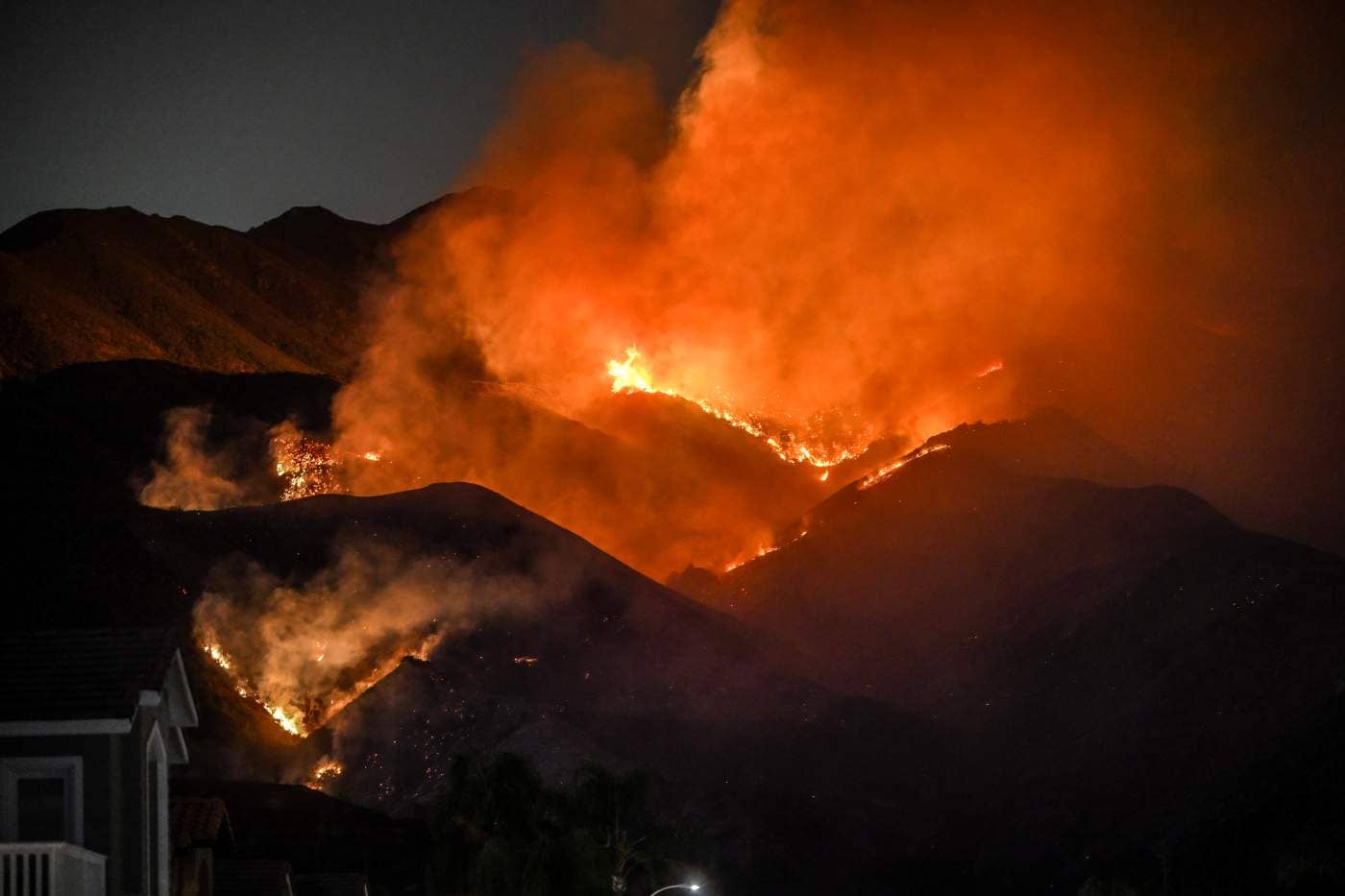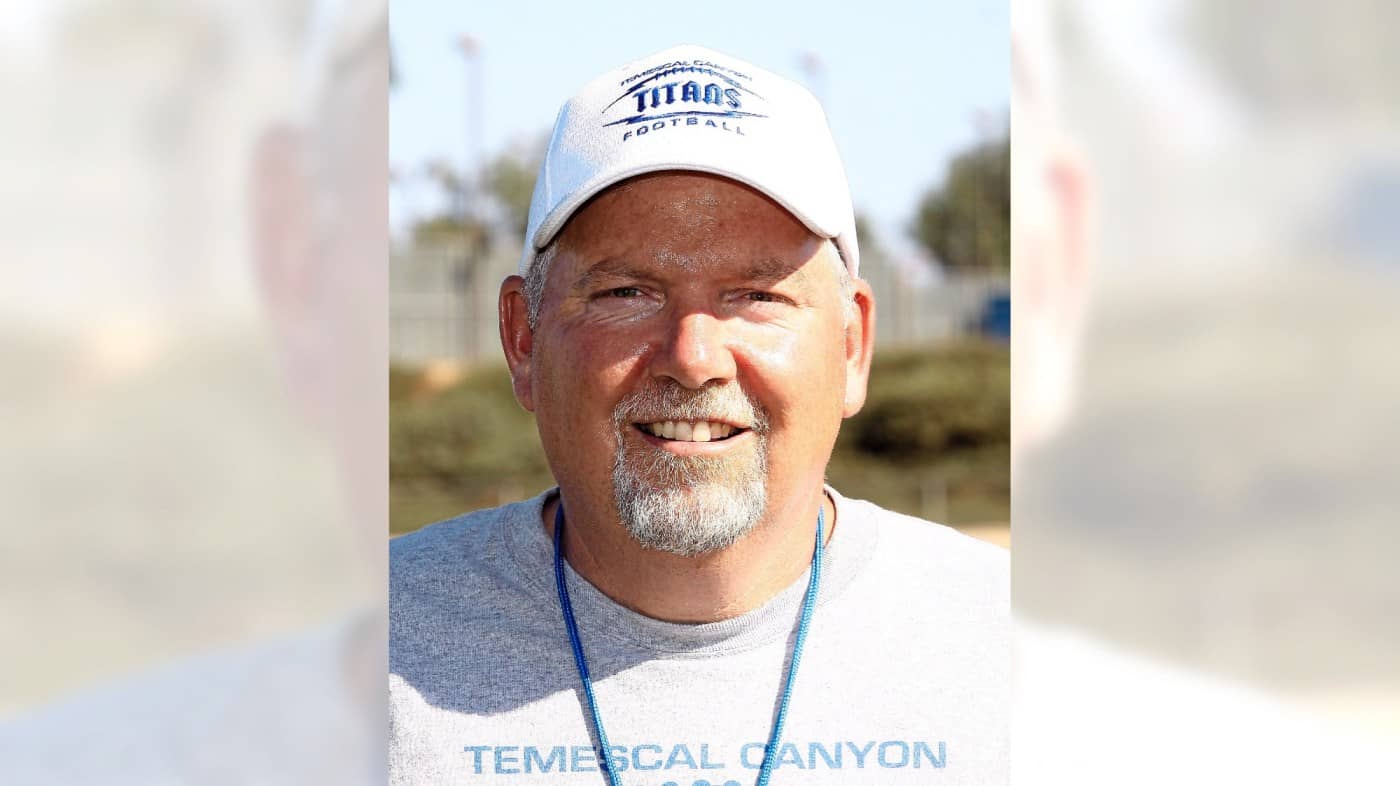By David Downey | Contributing Writer
With summer fast approaching, toxic algal blooms are beginning to pop up at Inland Empire lakes, posing a threat to people and their pets.
The blooms of cyanobacteria, commonly called blue-green algae, often look like streaks of spilled paint.
RELATED: New technology could help Lake Elsinore, other Southern California lakes fend off toxic algae blooms
Their presence has prompted state and regional officials to urge lake visitors to take precautions.
In recent weeks, “caution” advisories have gone out for Lake Elsinore and Diamond Valley Lake in Riverside County, Puddingstone Reservoir at San Dimas in Los Angeles County, and Silverwood Lake in the San Bernardino County foothills. Signs were posted around those lakes specifying what activities should be avoided.
State officials said the signs at Silverwood Lake were taken down early this week after tests confirmed copper sulfate treatment had eliminated the threat there, for now.
Mary Fahey, a spokesperson for the California Department of Water Resources, said via email, however, that visitors should still look out for and avoid algae and scum, both in the water and along the shore.
Fahey wrote that “patches of algae may still be present in the lake, such as in back coves where the treatment could not reach.”
It’s important, too, said West Bishop, an algae scientist and water quality research manager with EutroPHIX, to recognize that tests represent a snapshot in time of a particular water sample.
“It’s likely to come back at some point,” said Bishop, who is based in Charlotte, North Carolina, and treated Silverwood, a State Water Project reservoir, for a bacteria bloom several years ago.
Two other prominent Inland Empire reservoirs — the State Water Project’s Lake Perris near Moreno Valley and Metropolitan Water District’s Lake Skinner near Temecula — aren’t under advisories, officials said.
Pets are especially vulnerable
There are three levels of advisories issued when harmful bacteria is present in the water: caution, warning and danger.
Under current caution advisories, swimming is generally permitted. But people are urged to stay away from algae and scum, to avoid drinking the water or using it for cooking, to not eat shellfish from the lake, and to keep pets out of the water.
“Dogs are very sensitive to toxic algae and can ingest it when they lick their fur after swimming,” Fahey wrote.
It’s OK to eat fish caught in a lake under a caution advisory, officials said, but the guts should be thrown away and filets should be cleaned with tap water or bottled water before cooking.
Adam Gufarotti, Lake Elsinore community support manager, said the advisory there won’t prevent the 11th Annual Dream Extreme Fishing Derby from taking place Saturday, May 18.
Nor will it halt boating activities, he said.
Rebecca Kimitch, a spokesperson for Metropolitan Water District, said a caution advisory covers all of Diamond Valley Lake, the huge drinking-water reservoir near Hemet.
Diamond Valley is 4.5 miles long, 2 miles wide and 250 feet deep, when full.
Among other things, a sign at the marina warns visitors to keep children away from algae, and not to use the water for drinking, cooking or cleaning fish. Instead, fish should be cleaned with tap water or bottled water.
Swimming is never allowed at the reservoir, Kimitch said.
Swim season approaching
At Puddingstone Reservoir in Frank G. Bonelli Regional Park, however, people can swim in a designated area during the season.
Derek Elleri, lake aquatics manager at for Los Angeles County Parks and Recreation, said the swimming season will begin on schedule Memorial Day weekend, despite the advisory there.
Visitors are allowed to fish, boat and get out on the water with stand-up paddle boards and personal watercraft, Elleri said.
“We’re at the caution level,” he said. “We tell people to be mindful of the risks and try to avoid contact where they can.”
Elleri said workers spotted algae growth at Puddingstone a couple weeks ago.
It was “almost like a paint sheen on the water,” he said.
Test results received Monday, May 13, confirmed harmful bacteria in the 250-acre lake, he said.
When bacteria levels rise higher and “warning” advisories are issued, swimming is forbidden at affected lakes, according to a state website.
Under a “danger” advisory, visitors are asked to avoid eating fish caught at those lakes as well, and to stay out of the water.
Algae problem grows
The timing of the bacteria blooms’ appearance at some Inland Empire lakes before the summer heat arrives is cause for concern.
“It’s definitely concerning, not necessarily a surprise, unfortunately,” said Bishop, the algae expert.
Such blooms are occurring earlier and lasting longer around the country, Bishop said, as reservoirs age andaccumulate nutrients and as climate change fuels a rise in water temperatures.
Other factors include increasing carbon dioxide levels and stronger ultraviolet light penetration, Bishop said.
The cyanobacteria blooms are dangerous because they can produce many different toxins — ones that harm the liver, kidneys, brain, digestive system and skin, he said.
“I don’t want to be a fear monger, but these toxins have been likened to ricin and cobra venom,” he said.
According to posted signs, toxins can irritate peoples’ eyes and cause skin rashes, vomiting and diarrhea. Pets can also suffer from vomiting, diarrhea and convulsions, and even die.
Because the bacteria are so toxic, Bishop said, “We need to get this under control.”
Bishop said one of the biggest needs is to reduce the nutrient load in lakes. Nutrients such as nitrogen and phosphorus pile up as rain washes residential and agricultural fertilizer, human waste and animal waste into bodies of water.
“These nutrients jumpstart these blooms, and allow these blooms to achieve higher densities,” he said.
Silverwood Lake is more than 50 years old and, as a result, has accumulated many nutrients, he said.
Lake Elsinore, Southern California’s largest natural freshwater lake, also has much nutrient material because it’s at the end of the San Jacinto River drainage.
“With that all sitting there and accumulating, there is very little flushing out,” Bishop said.
Lake Elsinore also is shallow. So it tends to heat up earlier than other area lakes, Bishop said.
Oxygen-rich bubbles are helping
In Lake Elsinore, city officials are taking steps to address the problem.
Gufarotti, the community support manager, said the city on Feb. 6 launched a “nanobubble” technology project. The $2 million system purchased from Hawthorne-based Moleaer uses microscopic gas bubbles 2,500 times smaller than a grain of salt to release oxygen in the water.
“It’s introducing oxygen-rich bubbles at the bottom,” Gufarotti said.
It’s a two-year pilot project focused on the eastern part of the lake, he said, adding that the city may expand the system to cover the entire lake after the trial period ends.
Elevated bacteria levels — which were in the lower part of the caution range — were detected at two of five monitoring sites, Gufarotti said. Those are near the West Marina and Perret Park.
Harmful bacteria wasn’t detected at three other stations near the nanobubble equipment, Gufarotti said.
Gufarotti told the Lake Elsinore City Council in a Tuesday, May 14, report that the lake is clearer and bluer than it was this time last year because of the project.
Chris Stephan, Moleaer global director of sales for surface water, said there is more oxygen in the lake and less harmful algae.
Related Articles
Mudslides have killed more than 200 in Ethiopia
Southern California receives $500 million to slash freight emissions
Abused beagles in Envigo scandal are free and loving SoCal
Rare butterfly is behind ‘mass destruction’ on rare Miami plants. Can both be protected?
Injured falcons, hawks and owls get help with new LA County ‘raptor rescue’
Still, summer is around the corner and rising water temperatures will present a challenge.
“Water holds less oxygen when it’s hot,” Stephan said.
Gufarotti said the city, in addition to deploying the nanobubble system, is gearing up to apply a treatment to kill algae twice a month.
“The summer is going to be tough,” he said. “And we’re going to fight back.”



